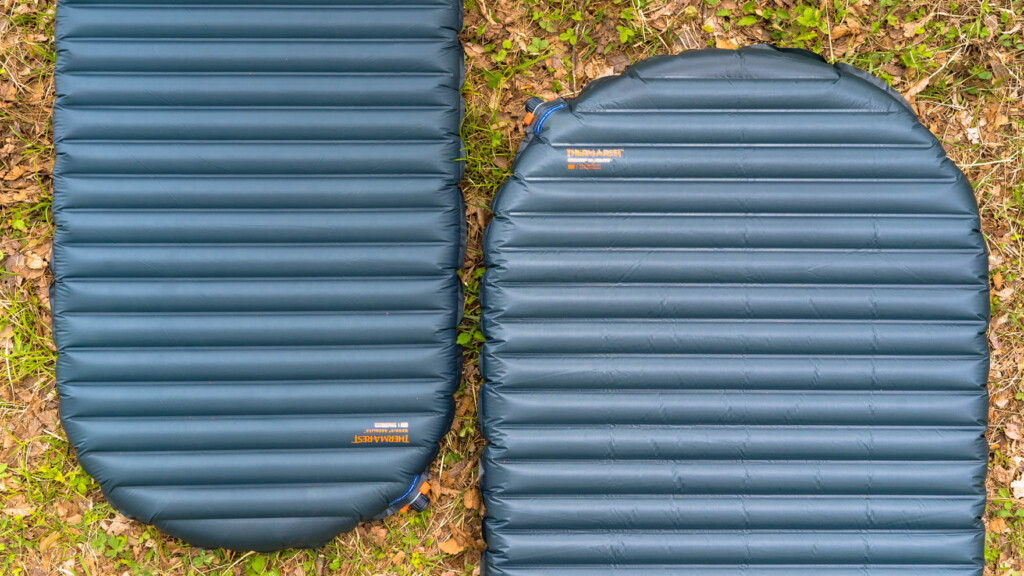
Once used, it becomes addictive with "+13cm" magic power. Therm-a-Rest "RW" size sleeping pads were unexpectedly comfortable
Just a 13cm change can make you feel so much better
Along with the sleeping bag, the sleeping pad (mattress) that goes under the sleeping bag is arguably the most important item for a good night's sleep in a tent. The mattress not only cushions the unevenness of uneven ground, but also blocks out cold air from the ground and maximizes the heat retention effect of the sleeping bag, making it an essential piece of gear for a good night's sleep in the mountains. Choosing the right mattress for you is essential for a safe and comfortable mountain climb
This site has talked about "good mattresses" many times in the past, from how to make the right choice practical comparisons and reviews of popular models . However, when considering a sleeping pad, most people probably worry about things like "insulation" and "thickness," which are easily understood and directly related to sleeping comfort.
However, when it comes to sleeping comfort, there is another important point that is often overlooked. In this article, the NeoAir a lightweight mattress for mountaineering and alpine climbing from Therm-a-Rest , with other sizes, which once again made me realize just how important the "width of the mattress" is for a good night's sleep.
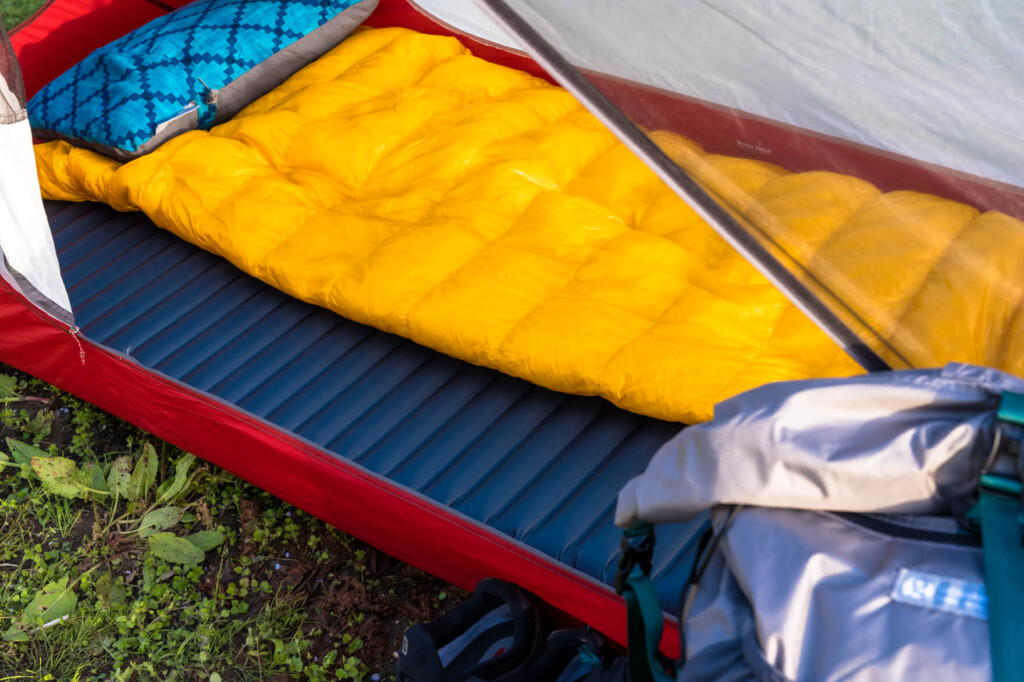
table of contents
- There's actually a trekking mattress that's just barely shoulder-width, right?
- What is Therm-a-Rest's newly added "wide model"?
- What has changed in the wide model?
- Summary: You'll be hooked on the unforgettable comfort. Unless you're trying to cut down on weight, the wider model is definitely recommended
There's actually a trekking mattress that's just barely shoulder-width, right?
Until now, most regular-sized mattresses available for mountaineering and climbing have been around 20 inches wide (approximately 50-55 cm). Therm-a-Rest's regular model is 51 cm wide
When you think about why it's this width, it's clear that from a comfort standpoint, it's better to be wider, but it's also true that when you're using it for extreme outdoor activities, you want your luggage to be as compact and light as possible. As a result of the conflict between these two conflicting needs, the width was cut down as much as possible, so that it wouldn't go below the shoulder width of an average man, and that's why it's called a "20-inch width."
When you sleep on your back, do your arms drop to the ground?
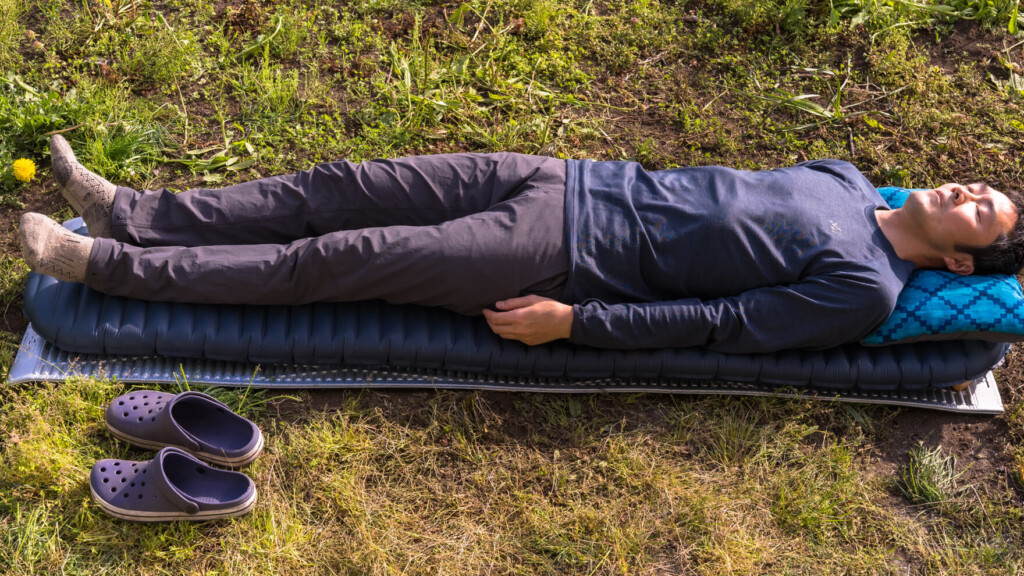
When I lie on my back on a regular-size mattress, I feel like the picture above. I'm 176cm tall and my shoulders are about 45cm wide, so while there's a little room under my armpits, it's a tight fit around my shoulders and waist, and if I'm not careful, my arms will fall to the ground. If my arms are fully inside the sleeping bag, they won't fall out, so it's not impossible to sleep, but the floating feeling isn't exactly comfortable. That's how small it is, considering portability in the mountains
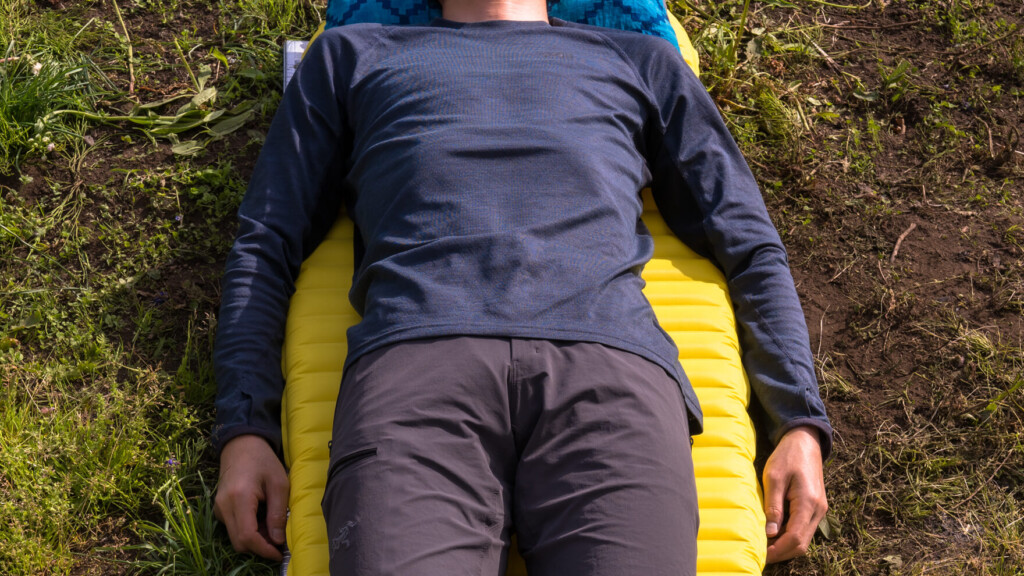
However, in this case, the part of your body that extends beyond the mattress will accidentally come into direct contact with the cold ground, and because the ground, unlike the mat, is not warmed by your body heat, your body heat will be rapidly taken away from you. This may only be a minor concern in warm seasons, but in cold seasons, even if your arms are inside the sleeping bag, you can still feel the cold, making it a problem that cannot be ignored. The photo below shows the temperature measured with a thermography app on a smartphone immediately after laying a mattress on the ground at dawn, with your body on the mattress and your arms on the ground. The air on the mat is warmed by your body heat and blocks out the cold air from the ground, but the cold ground directly takes away your body heat
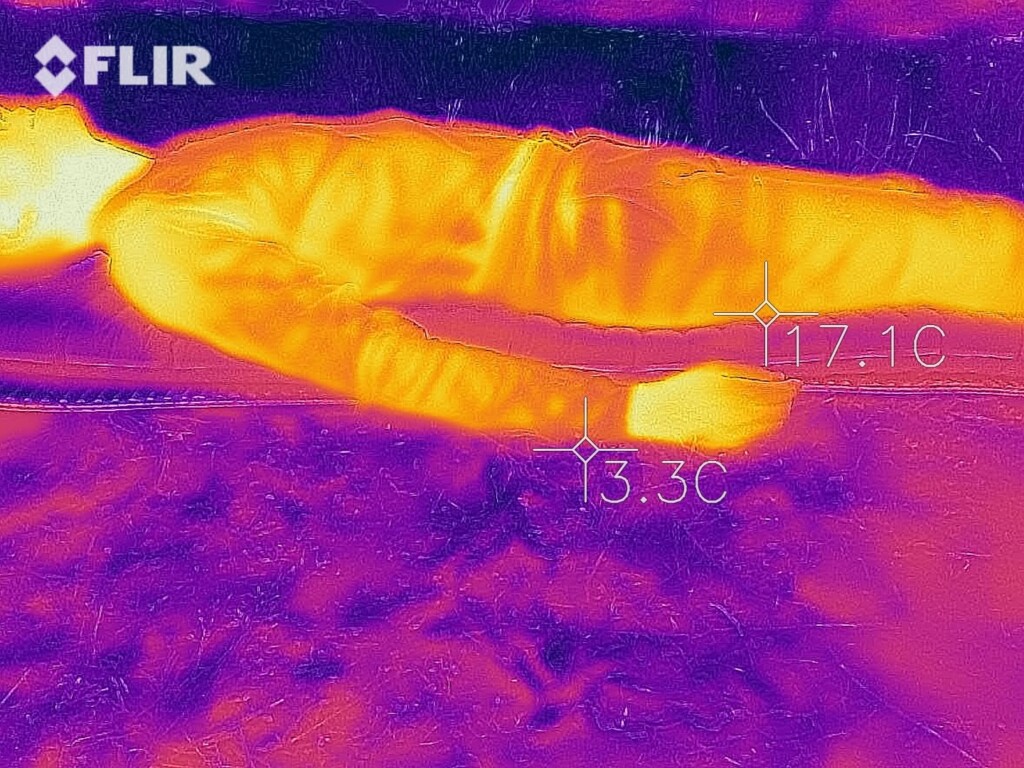
When you sleep on your side, don't you find it difficult with your knees and toes sticking out?
Even for side sleepers who usually sleep on their side, a mattress that's just shoulder-width apart still doesn't offer enough room. In fact, most people find that their knees and elbows end up sticking out of the mattress when they sleep on their side (see photo below). While it's not so narrow that you can't sleep, I personally find it difficult to find a place to place my arms and elbows, and the reality is that I can only sleep comfortably on my side in a position that I've barely managed to achieve after several attempts
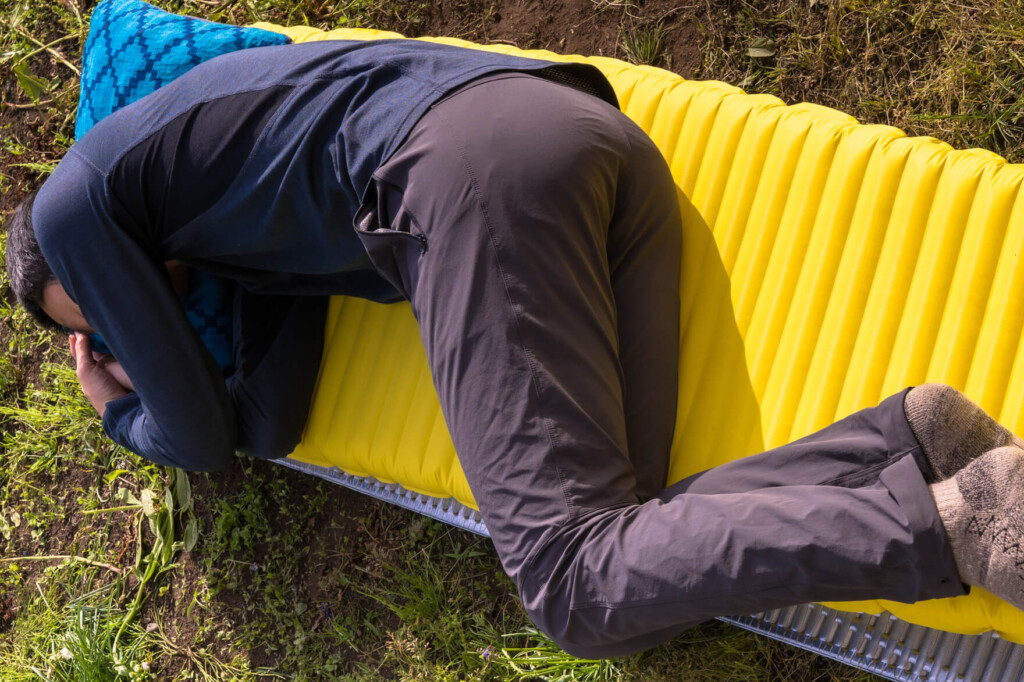
Isn't it difficult to roll over?
Naturally, it's difficult to turn over on a narrow mattress. You have to shift your body little by little, being careful not to drop
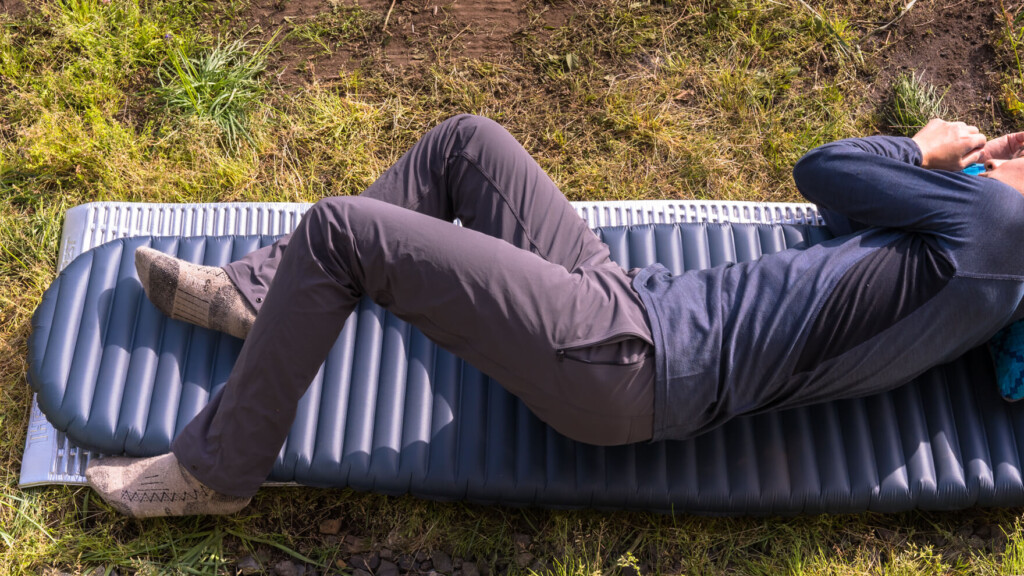
What is Therm-a-Rest's newly added "wide model"?
For the endurance-rich mountaineers and serious alpinists of the past, it may have been enough if the shoulders were kept in place. However, in today's world where values are diversifying and there are many hikers and campers with different abilities and goals, it is natural to hear voices saying that there is no need to cut back so much, and that there should be options that place a bit more emphasis on comfort
This led to the creation of the new wide-size model , "RW (Regular Wide) ." Specifically, this model has been added to NeoAir Uberlite , NeoAir Xlite , NeoAir X Thermomax, and Trail Pro. While the vertical width is the same as the regular size, the horizontal width has been expanded by 13cm to 64cm (see photo below. From left to right: S size, R size, RW size, L size).

What has changed in the wide model?
To be honest, I was overconfident that the difference in comfort would be significant since the mattress was only 13cm wider
It's only 13cm, but it's still 13cm. It makes a surprising difference in your sleeping comfort
First, try sleeping on your back to see the difference
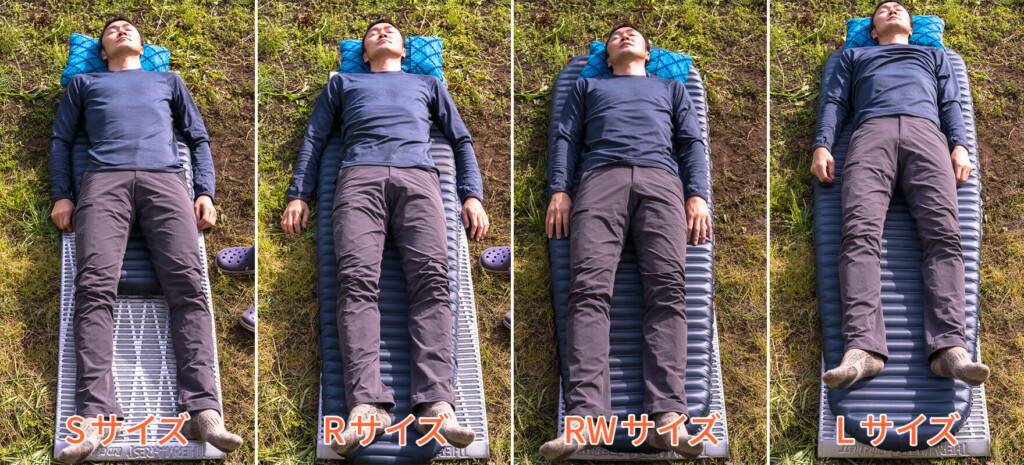
The photo above compares all the sizes currently available in the NeoAir UberLite lineup the RW size ( , your entire body stays on the mat even when you relax your arms.
Comparing simple numbers might not seem like a big difference, but when you consider that this 13cm difference can make the difference between "whether your arms fit on the mattress when you relax" or not, the difference cannot be ignored. Unlike the regular size, which makes you feel like you're lying on a single bed without being aware of the "cliff" on either side, the RW size gives you an astonishing sense of comfort and security.
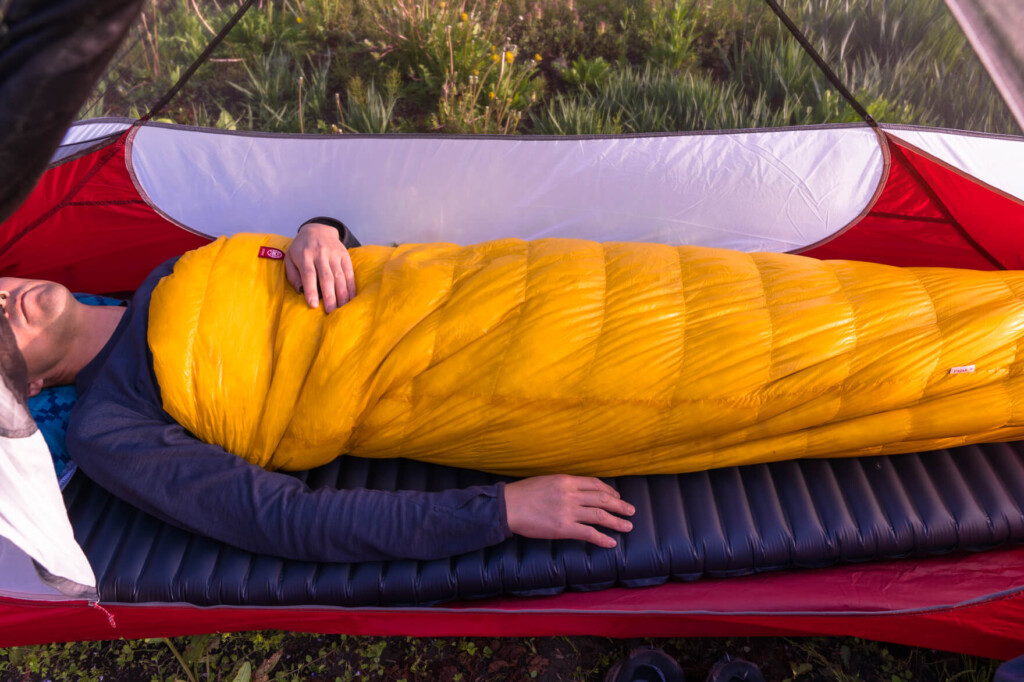
the RW size in this article , 64 cm, but it is also 196 cm long, which means it is sized for larger people, so there is unnecessary extra space at the feet.
It fits comfortably on your side and allows you to turn over easily. Side sleepers will be pleased
So what about sleeping on your side? (See photo below)

As I pointed out earlier, with the two models on the left (S size and R size), some parts of the body are either just barely fitting or stick out a little, but the RW model , the whole body fits on the mattress without any effort. Even when I turned over, I only had to shift my body about once, so I was able to turn over more smoothly than I expected. Whether I sleep on my back or side, the wider size significantly reduces the stress I feel while sleeping.
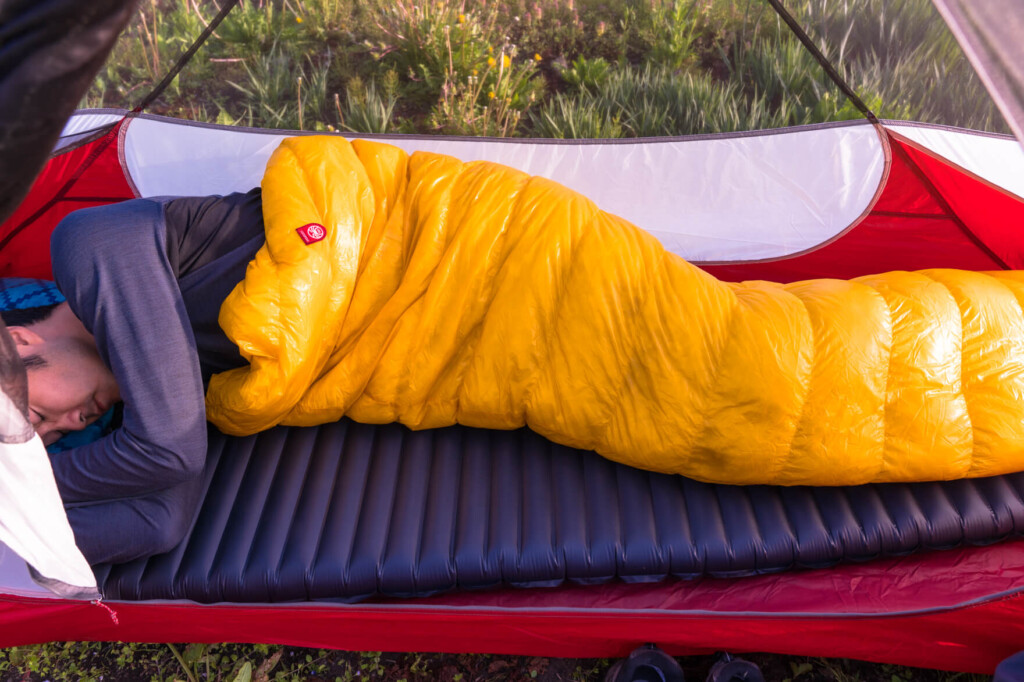
Even when expanded, it fits comfortably in a one-person tent
After reading this far, you might be thinking, "There are only good things about going with the RW size!" But if that's the case, then you've chosen this size from the beginning, so of course it's not all good news. From here on, we'll look at some of the concerns you may have about going with the wider size
The first thing that comes to mind is whether the wider width will prevent it from fitting in your tent. If it doesn't fit in your regular tent, then you can't take it hiking. However, in conclusion, this isn't a big concern
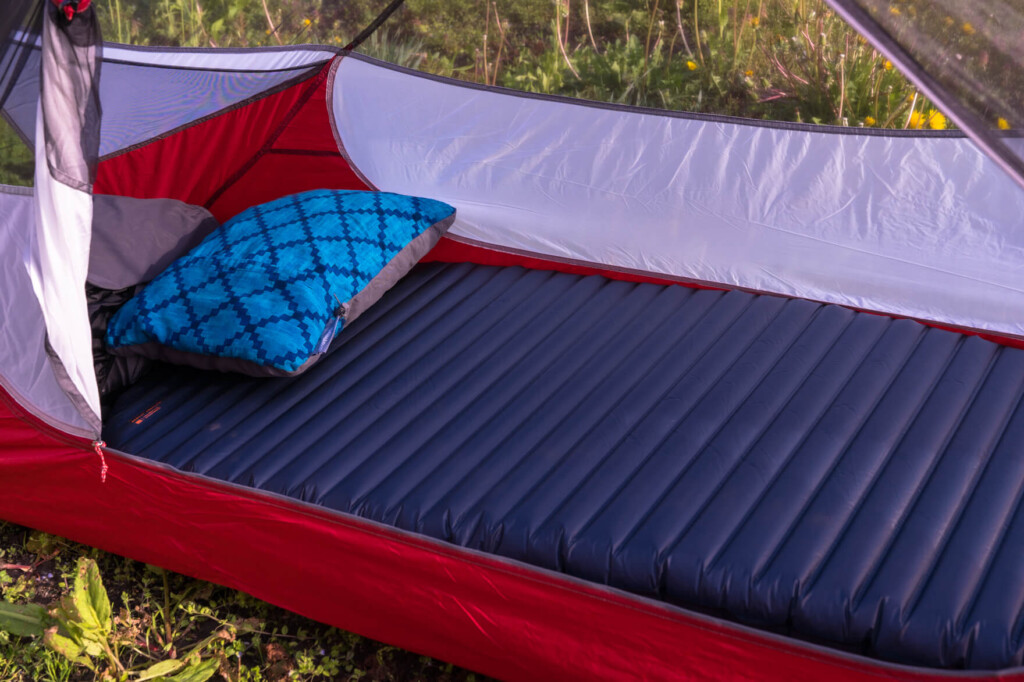
For one-person tents sold by many manufacturers, the width of the inner tent is generally around 100 cm, and at the narrowest it is around 70 cm. This means there are some differences in the amount of room, but as long as you are using it as a one-person tent, you should not have any trouble fitting it in

On the other hand, two-person tents require a bit more caution. Most typical two-person tents have a living space width of around 130 cm, so in this case, RW size mats can be lined up facing the same direction, so there's no problem. However, there are some models that have a reduced capacity, with widths of around 120 cm or less, and in these cases, it two RW size mats facing the same direction. In these cases, you'll need to find a way to lay them out, such as alternating the heads.
What about the weight and storage size?
Another, and perhaps most concerning, concern is the weight. For reference, we have compared the weight and packed size of the entire NeoAir Uberlite lineup in the photo below
| Model | Small size | R size | RW size | Size L |
|---|---|---|---|---|
| weight | 170g | 250g | 310g | 340g |
| Storage size (length x diameter) | 15×8cm | 15×9cm | 19×10cm | 19×10cm |
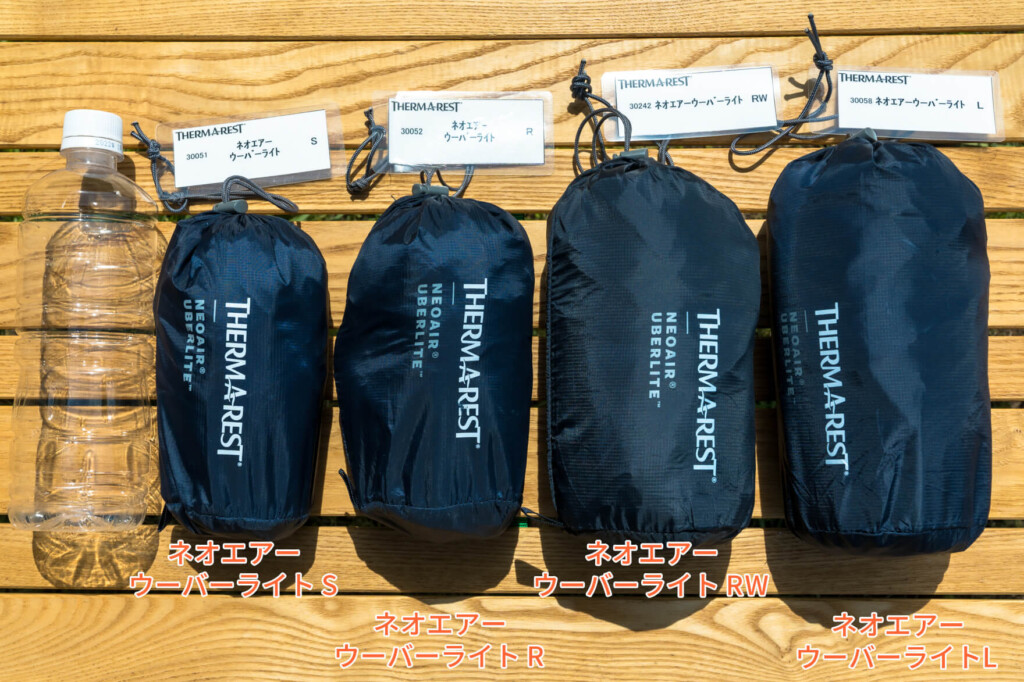
Compared to the R size, the RW size weighs approximately 60 grams and is approximately 4 cm longer when stored. While there's no denying the slight increase in weight, even if it's larger as shown in the photo above, it's still not that much larger than a plastic bottle, and the size can vary greatly depending on how you fold it, so it's not something that's noticeable. Considering that until now, the only wide sizes available were the L size or square models, it's fair to say that the burden has been significantly reduced while improving comfort.
For reference, let's also take a look at the comparison photo of the R and RW sizes of the NeoAir X Light
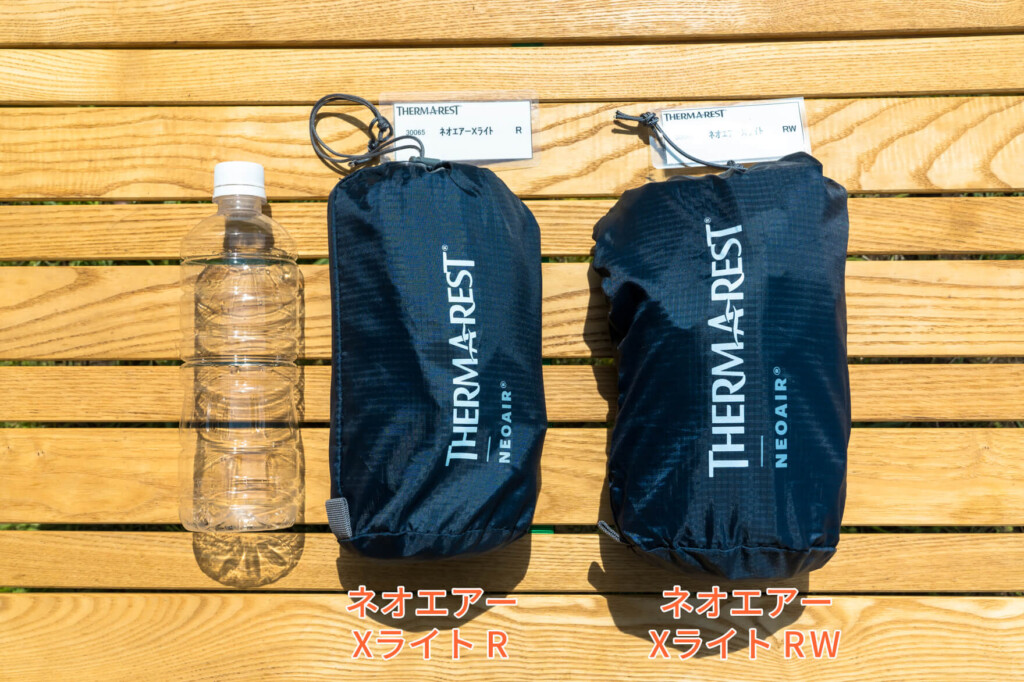
Summary: You'll be hooked on the unforgettable comfort. Unless you're trying to cut down on weight, the wider model is definitely recommended
I was honestly surprised at how much a slight increase in width could improve comfort. I used to be used to the width of regular-sized mats (around 20 inches), and thought, "That's just how it is for mountain climbing," so I stopped thinking about it, but once I experienced this width, I started to wonder how I'd ever been satisfied with such a narrow mat
Of course, the wide size does diminish the "lightweight and compact" advantage that has been a major factor in air mattresses until now, so in that sense it is not recommended for people who want something as light and compact as possible, or for people who are relatively small in stature
On the other hand, it is highly recommended for beginners who are not yet accustomed to camping in a tent, people who are confident in their physical strength and can use that to make tent life more comfortable, or for light tent camping where you don't need to cut back on your luggage too much.If you have been using the regular size until now, we recommend you give it a try and you will be amazed at the difference in comfort
The fact that there are a variety of sizes to choose from depending on the season, use, and purpose is undoubtedly a step forward for us users. Rather than focusing on one size being the best, pursuing your own preferences while considering the balance between lightness and comfort and figuring out the best packing for each is always one of the great pleasures of mountain climbing
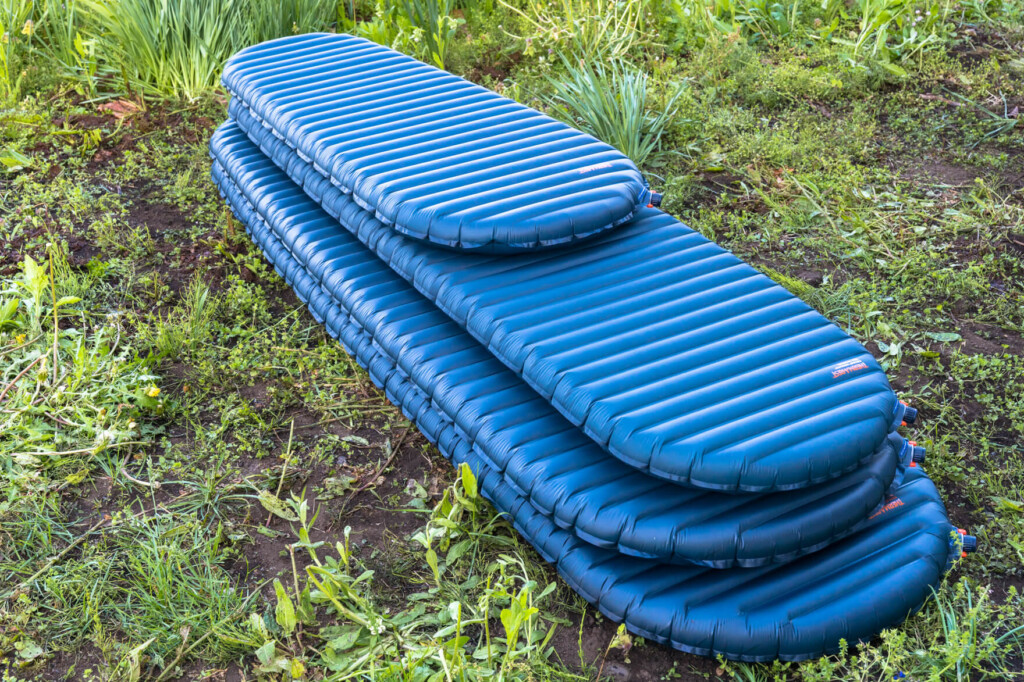


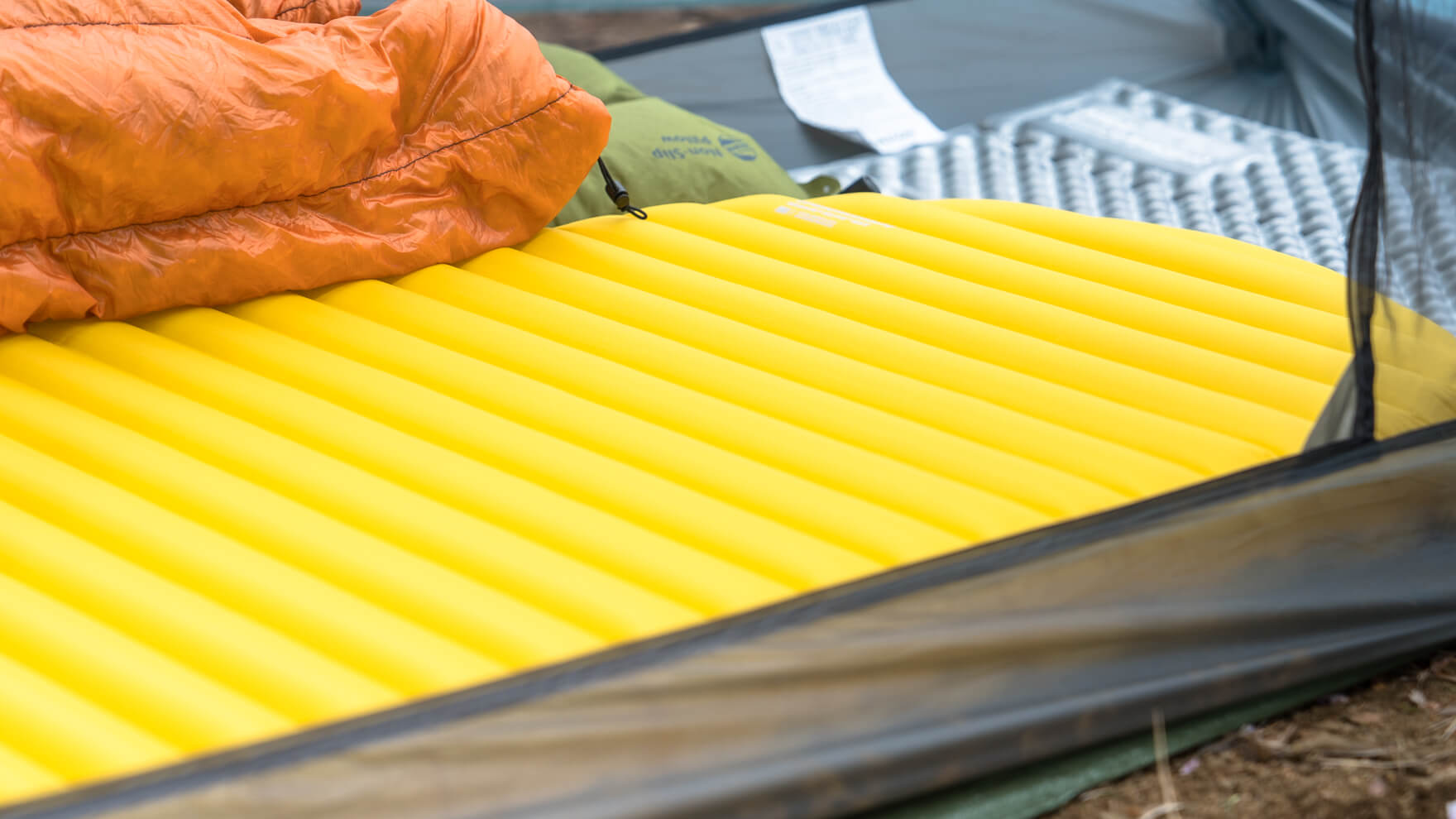 The "that" that was bothering you in the latest version of the Air Mat World, has finally been improved and there is no love
The "that" that was bothering you in the latest version of the Air Mat World, has finally been improved and there is no love THERM-A-REST "Neoloft" & MSR "Habbahaba LT" Review: The age where you can carry the comfort of your bed with a backpack is finally here. Incredibly comfortable mountain tents and mats that keep weight down
THERM-A-REST "Neoloft" & MSR "Habbahaba LT" Review: The age where you can carry the comfort of your bed with a backpack is finally here. Incredibly comfortable mountain tents and mats that keep weight down Review: Therm-a-Rest Antares HD Sleeping Bag A comfortable sleeping bag with a touch of skill and skill that I got from "Sekaimon".
Review: Therm-a-Rest Antares HD Sleeping Bag A comfortable sleeping bag with a touch of skill and skill that I got from "Sekaimon". Review: Therm-a-Rest Vela HD Quilt Quilt quilted sleeping bag not released in Japan, obtained through "Sekaimon".
Review: Therm-a-Rest Vela HD Quilt Quilt quilted sleeping bag not released in Japan, obtained through "Sekaimon".